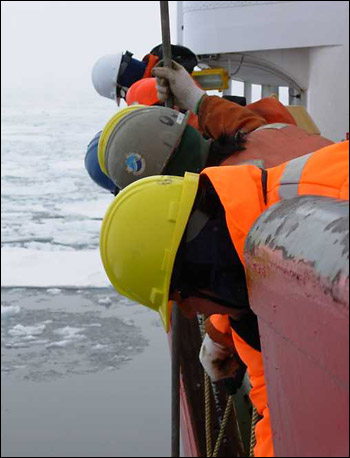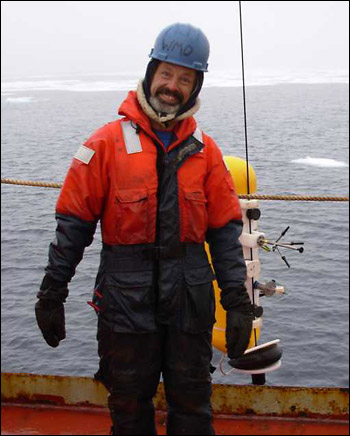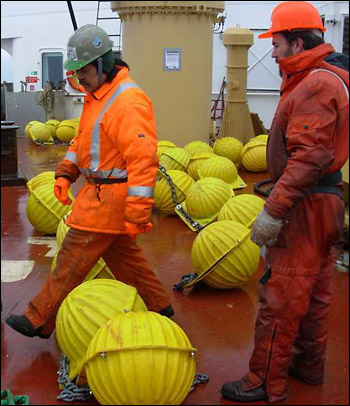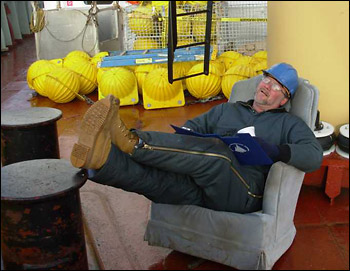Please note: You are viewing
the unstyled version of this website. Either your browser does not support CSS
(cascading style sheets) or it has been disabled. Skip
navigation.
Rick KrishfieldSeptember 9, 2006
The officer in charge of the deck is John Jenner, who communicates with the bridge via handheld radio. The Bosun, Rico Amamio, leads the deck crew and the crane operator through the mechanics involved in safely handling the gear over the side and back. Al Jarvis operates the crane, Gary Morgan handles the A-frame, and Brian MacKenzie or Bill May typically operate the winch controls. Dan Maclean runs the tension cart, while Terry Rhyno and Ralph Kaiser handle the spools of wire during changing and the flotation as it is deployed, among other tasks. On the science side, Will Ostrom coordinates the deck operations with the Bosun, while Kris Newhall manages the Lebus winch functions. Rick Krishfield keeps track of every piece of gear that is deployed and recovered to ensure that the equipment is installed as intended. Mike Dempsey is also an active participant on every mooring operation helping ready the scientific instrumentation or mooring hardware as needed. Once the top sphere surfaces, the most challenging part of the recovery operation is trying to tag the crane hook onto the float, which is approximately 10 m (over 30 ft) below deck level. Attaching the crane hook to one of the circular pickup points on the top sphere sometimes seems like a children's arcade game. At times the hook seems to slide easily into place, but on the windiest coldest days, it seems to take forever. Even worse can be trying to tag onto the cluster of yellow backup floats which sometimes position themselves perfectly so that no chain is exposed to connect to. These floats also have an amazing tendency to creep between icefloes and squirm away from the ship. In fact the backup flotation on Mooring D was particularly stubborn, but our patience prevailed. On the other hand, some of the most tedious time spent during mooring operations is when wire rope is being endlessly payed out or hoisted in, which can take several hours for the longest segments. Conversation, cigarettes and minor amusements are some of the methods that get us through long wire times. Last updated: October 7, 2019 | |||||||||||||||||||||
Copyright ©2007 Woods Hole Oceanographic Institution, All Rights Reserved, Privacy Policy. | |||||||||||||||||||||






